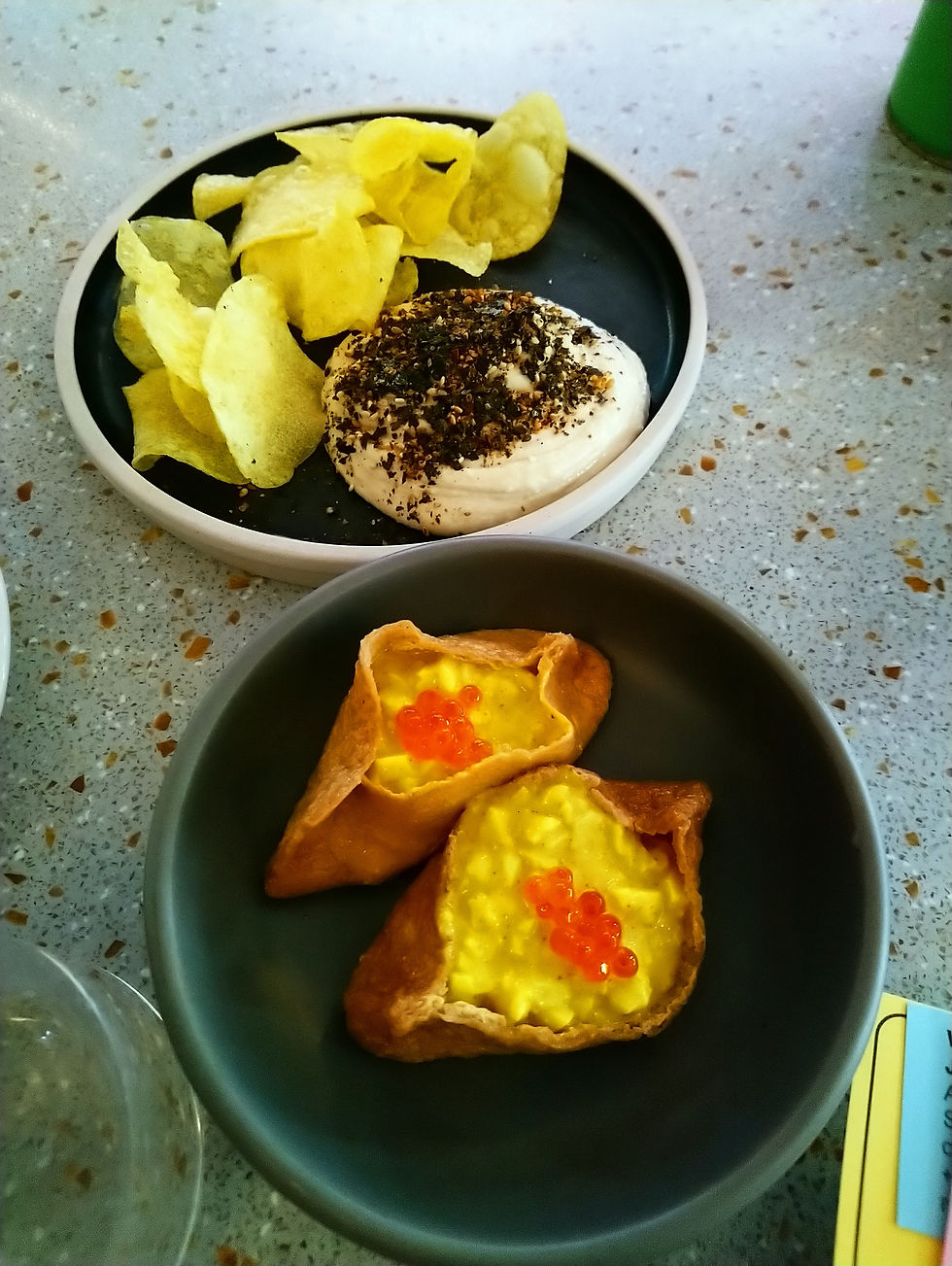Who has a food story? Why your breakfast, snacks, or dinners matter beyond your dinner table
- Alina

- Apr 5, 2023
- 4 min read
When we started the Hillingdon Food Stories project in October 2021, its title came naturally from a desire to encompass multiple ways of cooking, shopping, eating, sharing, or disposing of food. As we met people for interviews and events, it became apparent that, at times, the expression ‘food story’ might feel unclear – at once, it could seem too broad or as if it required something ‘big’ to qualify as a ‘story’. I write this to show that everyone has a food story which matters not only on a personal level but to the multiple communities we are part of, be that our family, school friends, work colleagues, fellow hobby enthusiasts, neighbours, cities, and beyond.

In short, a food story is made up of what we do with food and how we think and feel about food. For many of us, the foods of our childhoods, of our past, may be the ones that bring out more clearly defined feelings, such as nostalgia. But, in this piece, I show that past, present, and future are simple ways in which we can find our food story and, through it, find new ways to understand ourselves, our communities and relate with people every day. (And remember, you can read food stories we collected as part of the project here). Food of the past The idea of heritage or tradition comes up most often in conversations with people when thinking about food stories; there is something comforting, something that feels ‘natural’ about tying food to a particular geographical location or a group. Thinking about the foods of the past – those of your childhood, of your parents or grandparents, can offer an easier way to reflect on the dishes, ingredients, and ways of cooking that shape how you relate to food today (for example, you can read about being a third generation vegetarian here). Looking at how the foods you have been eating and have discovered since your early childhood can tell the stories of how foods travel and adapt, how they become ways of innovating and making new communities. Food in the present Of course, the food of our past does not fully define our food stories. Every day, we learn of new dishes from friends, family, and neighbours, from TV programmes and the internet. Have a think – what’s a new recipe you’ve recently tried? Where did you find it and why did you choose it? How did it turn up? Here is your chance to begin a food story - just tell us here what this recipe was. In my work with the Hillingdon Food Stories project, I’ve met people who create their own cookbooks, mixing recipes from their childhoods, with recipes printed from the internet, with handwritten recipes inspired by friends. So, your food story can be about what you do in your everyday life – how you shop, how you cook, how you eat, how you dispose of food. Many of us these days are also seeking to change something in our day-to-day eating – perhaps to change to a vegetarian or vegan diet, perhaps to eat less or more of specific ingredients, perhaps to try new recipes more often. Paying attention to what leads us to make these changes says something about the relationship people have with food at this point in time in the places we inhabit; it encourages us to think about how our individual habits can be shaped by external factors such as changes in living costs, health trends, marketing, living in the aftermath of a pandemic or in a time of climatic changes, and many more.
What is a change in your eating habits that you made in the past 2 years? Tell us here to help us understand these changes in Hillingdon. Food and the future The future relates to food in multiple and fascinating ways, from the innovations needed at a global scale to provide food for an increasing number of people, to how changes in climate affect what food is produced and consumed, to how we pass on recipes and inclinations for particular tastes, smells, textures and ways of cooking to coming generations. Reflecting on how children and young people learn cooking skills, become accustomed to ordering take away food, discover new recipes and ingredients, or develop tastes for particular dishes is essential for building relationships with the next generations as well as envisioning how food cultures intersect in new ways. How have your children learn to cook? What do you think it’s most important when teaching children to cook? Tell us here. How to begin telling your food story These are a few simple ways in which you can begin thinking about food and documenting your food story. Follow our project to discover how through writing, audio-video recording, meeting, and discussing with neighbours and friends you can weave your food story and show how foods sustains individuals and communities. A food story is not a static thing but a process, just like tasting while cooking; thinking about how and what we eat and sharing that with family, friends, and our communities connects us to other people, places, and times. Follow Hillingdon Food Stories or get in touch with us at hillingdonfoodstories@gmail.com to share your food story.



Comments